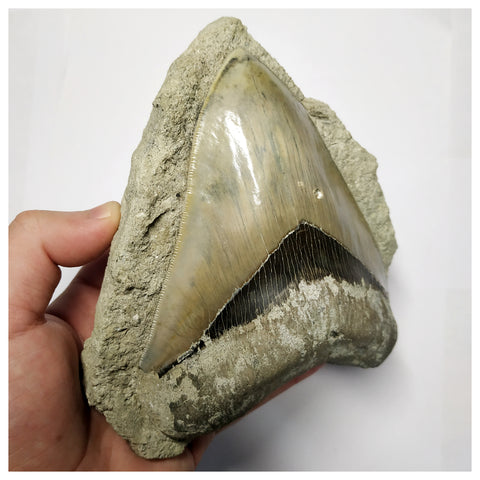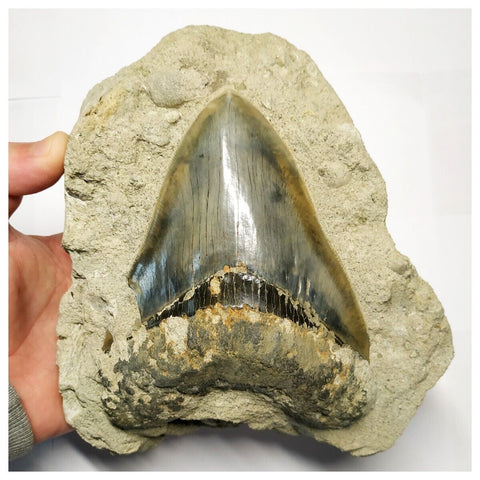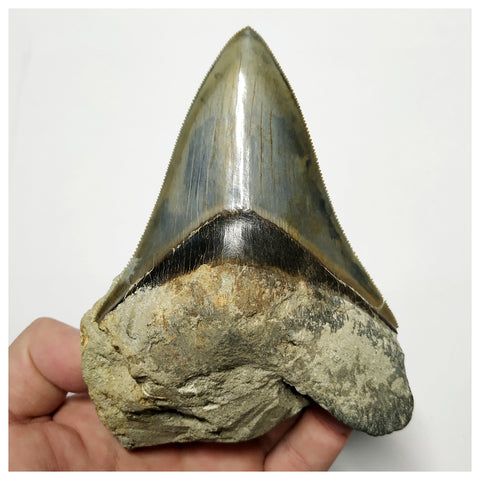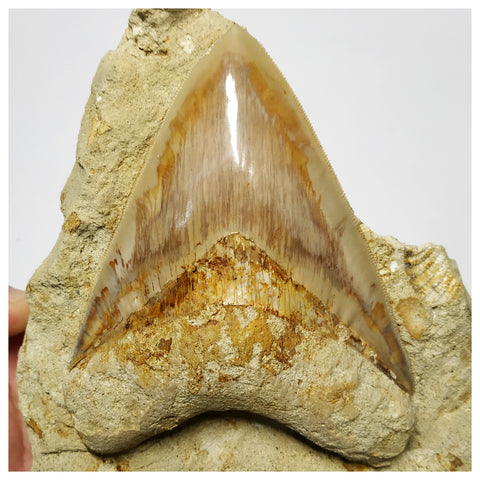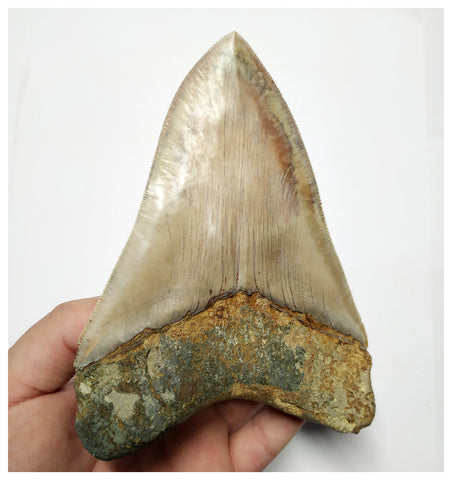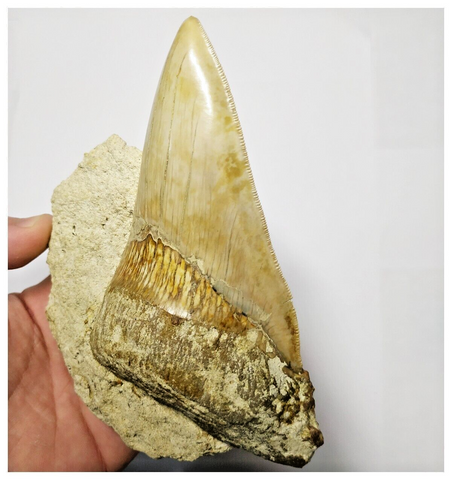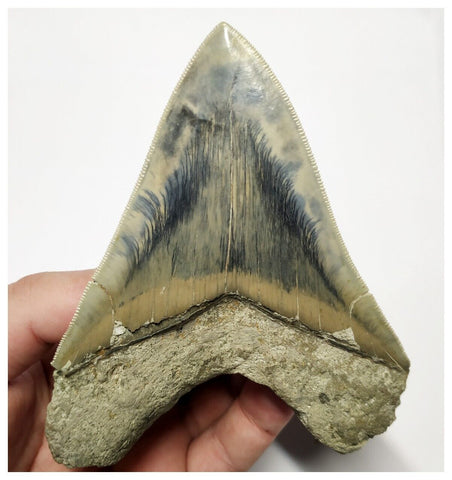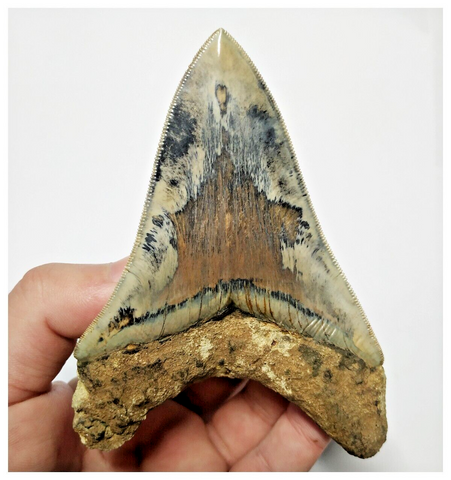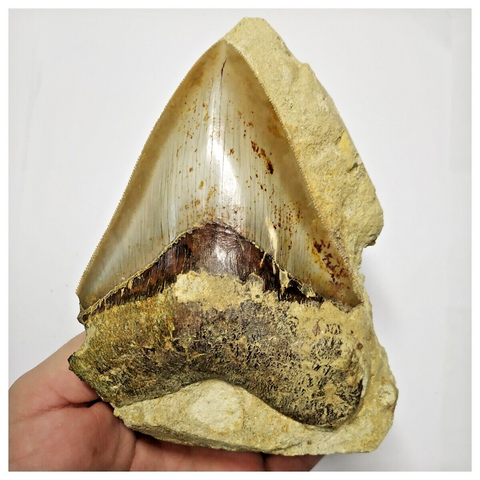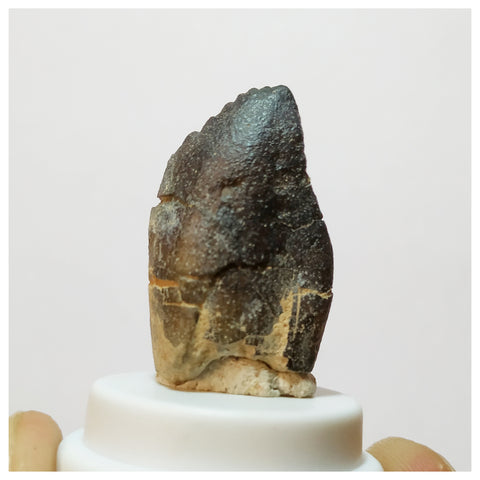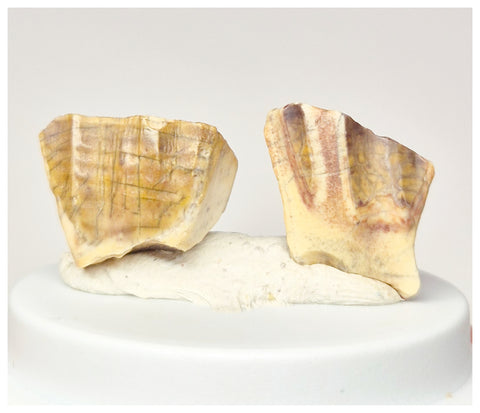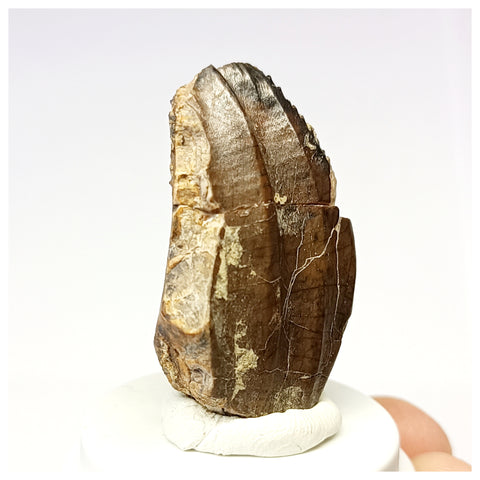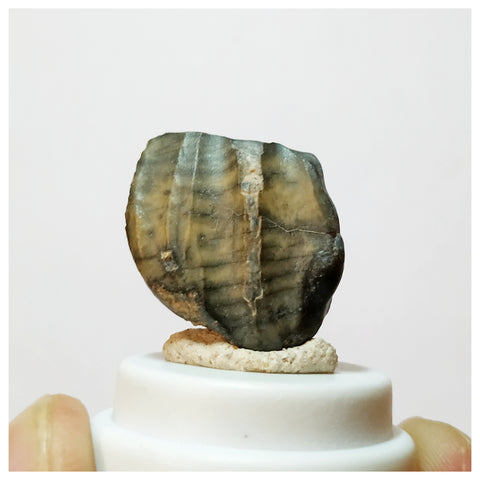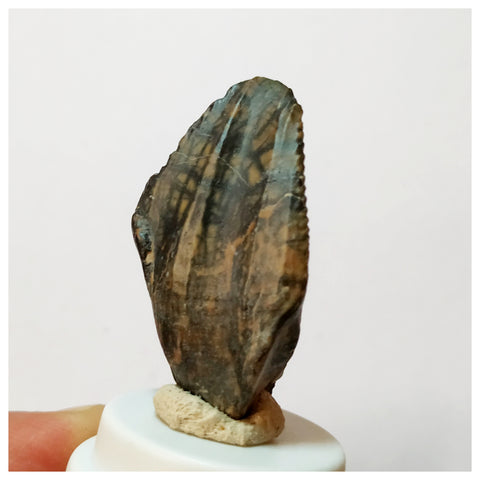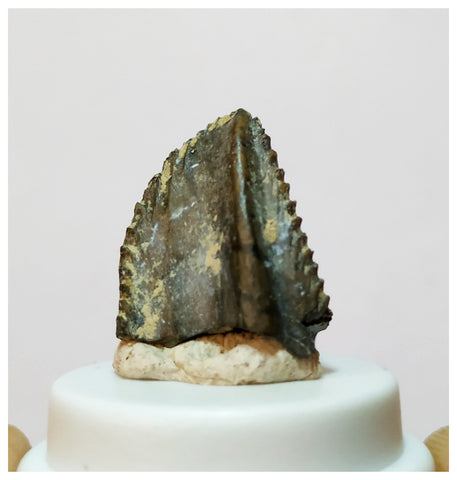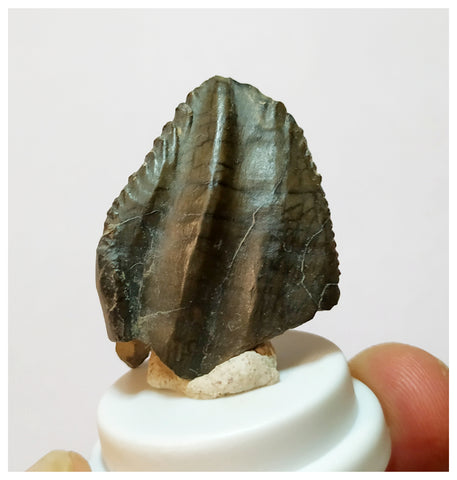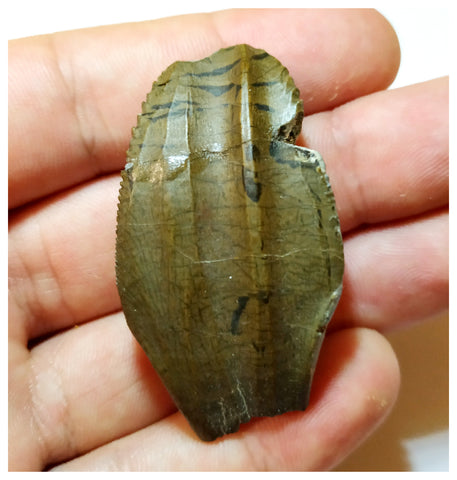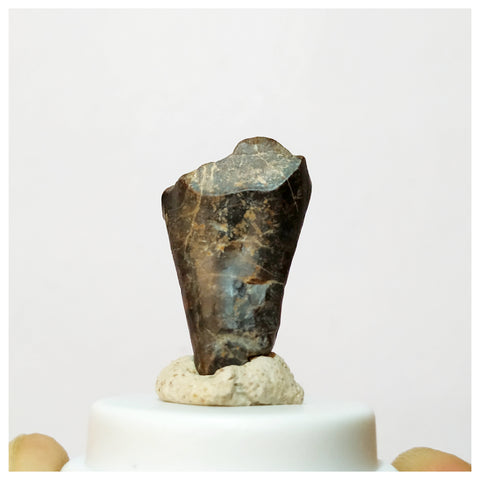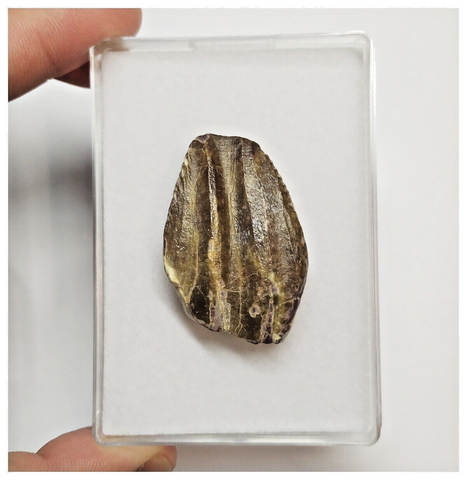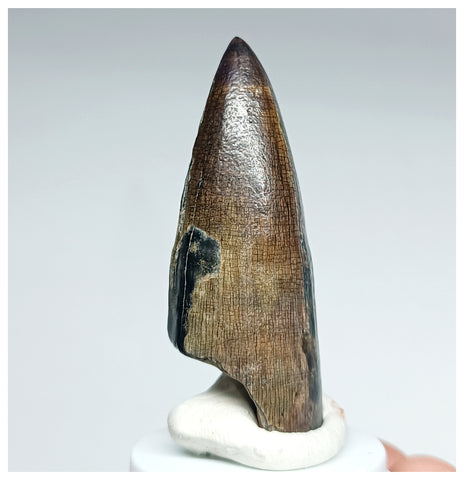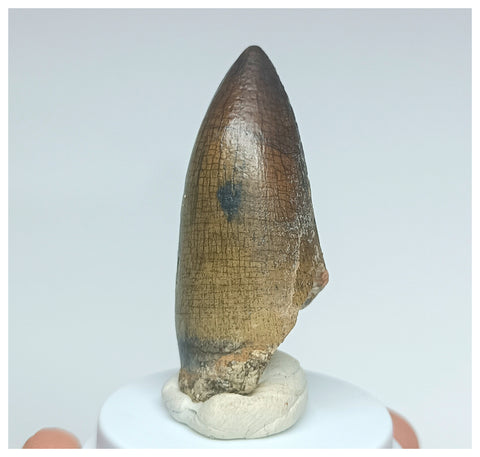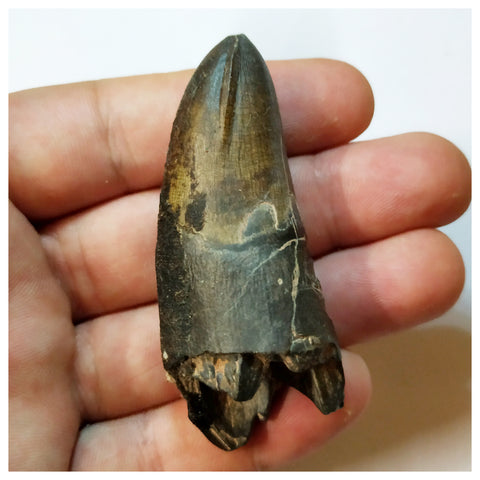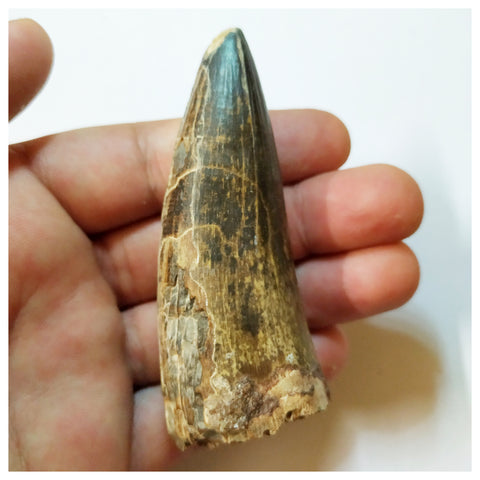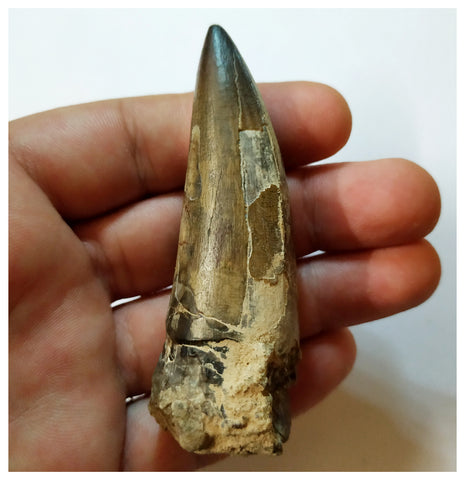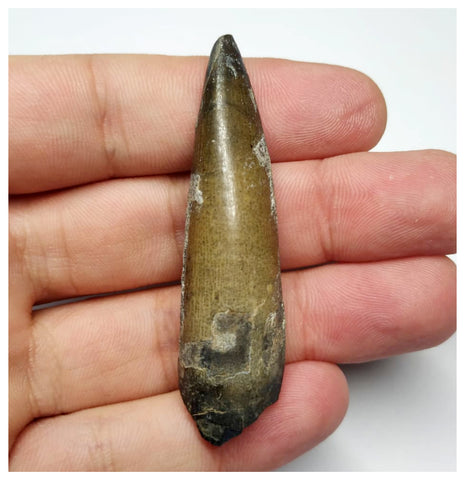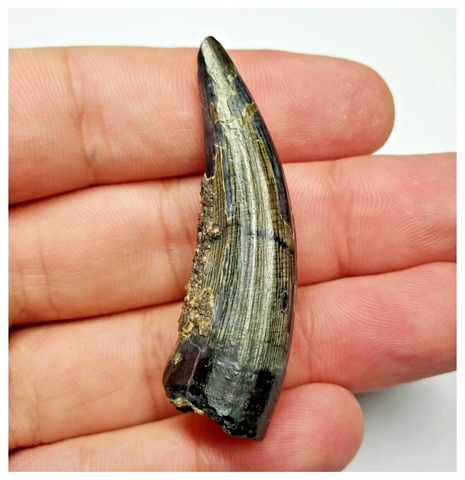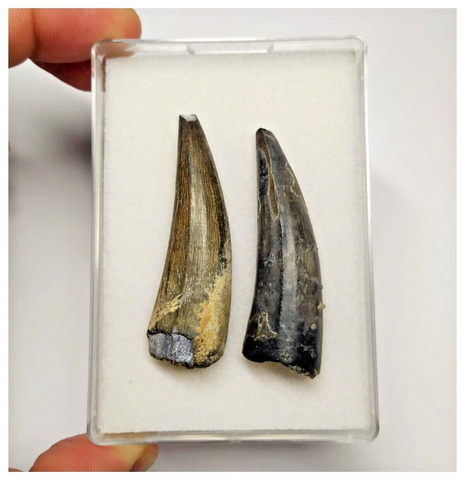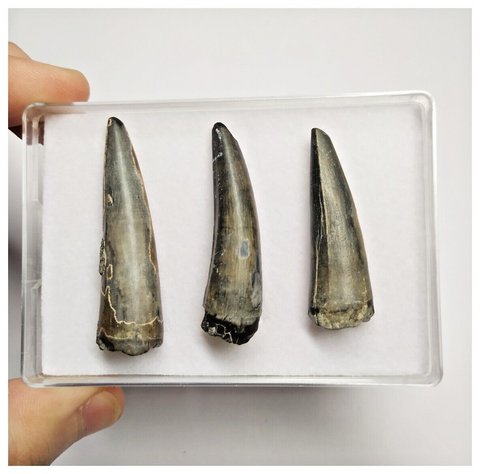Scientific name: Abelisauridae family - "Raptors"
Location: Taouz, South Morocco
Geological Formation: Ifezouane Fm
Age: Upper Cretaceous, Cenomanian stage ( 96 million years)
Size (The biggest): 1,7cm
Ref: 1180
Observations: Preserved in its natural gravel-sandstone matrix. Unusual specimen "in situ". Show piece. Also its a good piece to understand the geological context and the nature of this cretaceous geological formation.
This is a very special small-sized theropod dinosaur tooth. Within the amazing assemblage of North African Cretaceous theropods, some families have not yet been described in formal literature. Its serrations are very well defined. Its enamel has a great range of colors. Not only the tooth belongs to an inusual theropod family, but its fossilization is tremendously beautiful too.
We have identified it as belonging to the family Abelisauridae (indet), can be easily distinguished from the teeth of the Dromaeosauridae family. This teeth have generally a compressed morphology, the cross section is oval at the base, the mesial side is strongly curved and the distal side is almost straight to the base of the tooth. Usually the two edges have equally developed serrations. This last feature easily differentiates them from the teeth of the Dromaeosauridae family.
This tooth, which our experts have identified as belonging to the family Abelisauridae (indet), can be easily distinguished from the teeth of the Dromaeosauridae family. This teeth have generally a compressed morphology, the cross section is oval at the base, the mesial side is strongly curved and the distal side is almost straight to the base of the tooth. Usually the two edges have equally developed serrations. This last feature easily differentiates them from the teeth of the Dromaeosauridae family.
Still nowadays the Abelisauridae family has not been officially described in the dinosaur assemblage of the Upper Cretaceous of this sector. However, it is known that both the Abelisauridae and the Dromaeosauridae are present there. Most of the rests are isolated teeth. In the following link you could find an article that deals with the study of a population of isolated teeth that come from this sector. They do a morphometric study of the pieces and compare them with other teeth previously described in the literature. They are able to identify three different morphotypes with a serrated edge: Carcharodontosaurid, Dromaeosaurid and Abelisaurid.
Small-sized theropod teeth morphometric study: Cretaceous KemKem Beds
In the following link we can also find a study where an Abelisaurid is described in this sector based on the proximal area of a femur:
A large abelisaurid (Dinosauria, Theropoda) from Morocco and comments on the Cenomanian theropods from North Africa
The teeth with strong and vivid fossilization colors such as red, orange and black come from small paleochannels composed by thin layers, in the intermediate and upper stratigraphic levels (Red Sandstone Beds), from the Aoufous and Ifezouane Formations (Kem Kem Basin, South of Morocco). The lithology of this body of sediment is characterized by the dominance of sandstones (also known as arenites) and fluvial gravel, of siliceous nature. Sometimes large concentrations of iron oxide are present, and then a small sample of that is usually present at the base of the tooth. These mineralizations are responsible for the wide range of beautiful reddish color tones, slowly drawn during millions of years via fossil-diagenetic processes. The complicated sedimentarian architecture of the layers where most large vertebrates are found makes the excavation methodology a real challenge. Sometimes the local miners have to excavate long tunnels that follow the distribution of the fossiliferous layer.
The different Geological Formations that make up the orography of the Cretaceous in the South East of Morocco have been mostly treated in an undifferentiated and not too accurate way by collectors, by Paleontology aficionados and by fossil dealers.
Historically, fossils dealers from all around the world have identified the dinosaur pieces from this sector as belonging to the Tegana Formation. However, in a formal way, most of the last published studies refer to other nomenclature in the description of the units and formations of the Lower and Upper Cretaceous.
That's why next we include an interesting link where the Aoufous Formation and the Ifezouane Formation are described, making reference to their age, geological history, sedimentology, stratigraphy and vertebrate assemblage. It includes a brief explanation of the stratigraphic concepts that have been established formally until today in the studies of this sector of Morocco.
 Picture: Geological contextualization of North Africa outcrops: "First report on Cretaceous vertebrates from the Algerian Kem Kem beds. A new procoelous salamander from the Cenomanian, with remarks on African Caudata" Tannina Alloul et al., 2018.
Picture: Geological contextualization of North Africa outcrops: "First report on Cretaceous vertebrates from the Algerian Kem Kem beds. A new procoelous salamander from the Cenomanian, with remarks on African Caudata" Tannina Alloul et al., 2018.
 Picture: Geological map and statigraphic section of KemKem Cretaceous outcrops "Taxonomic Composition and Trophic Structure of the Continental Bony Fish Assemblage from the Early Late Cretaceous of Southeastern Morocco" Cavin L et al., 2015.
Picture: Geological map and statigraphic section of KemKem Cretaceous outcrops "Taxonomic Composition and Trophic Structure of the Continental Bony Fish Assemblage from the Early Late Cretaceous of Southeastern Morocco" Cavin L et al., 2015.
This way, the precise stratigraphic understanding of the origin of the rests, as well as the sedimentological analysis, enables a better paleoecologic characterization of the environments where this amazing dinosaur assemblage lived.
Aoufous Formation










